A New Model for Resilient Coastal Parks
Economic resilience and ecological restoration fell hand-in-hand—the success of one goal relied on the success of the other at Gulf State Park
 Sasaki
Sasaki
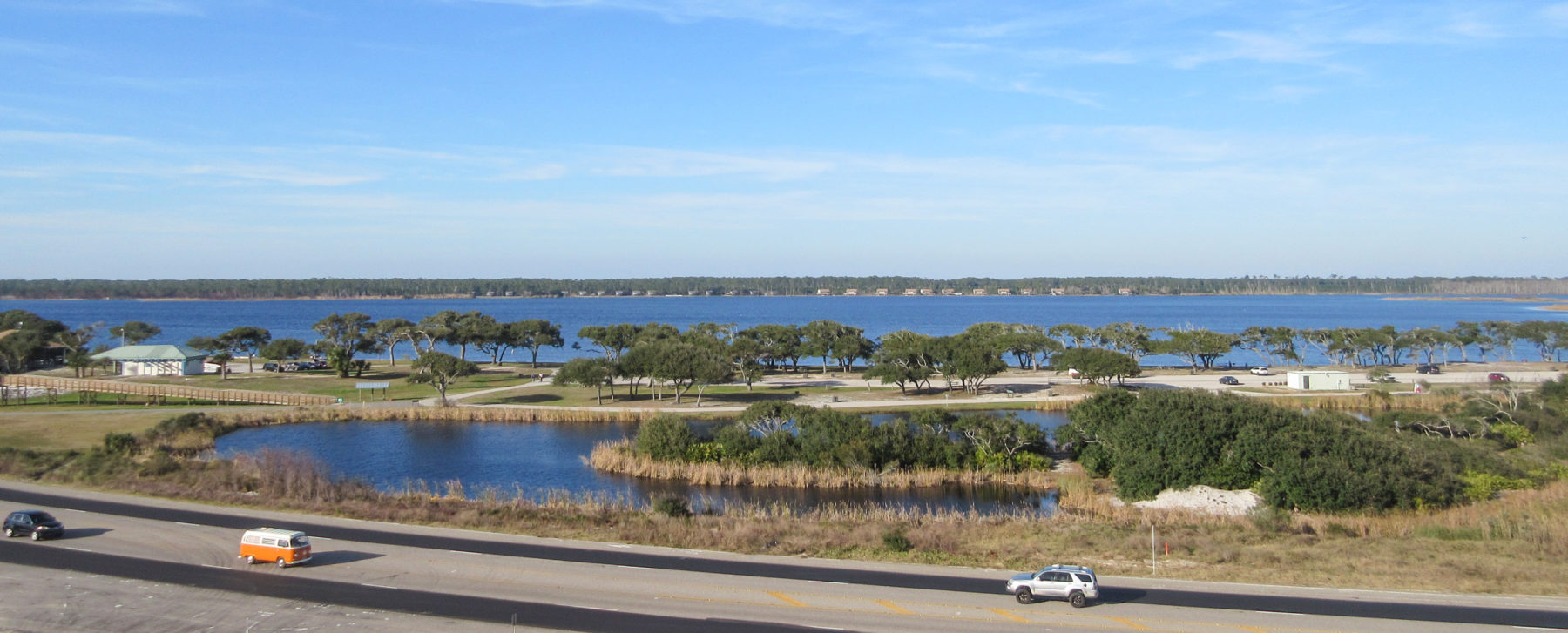
Amid cheers from an overflowing crowd, Governor Kay Ivey and other state and local dignitaries cut the ribbon and officially opened the Lodge at Gulf State Park. I was too far back to see the ribbon cutting, so my eyes were caught, instead, by a monarch butterfly that floated over the crowd, its orange and black wings fluttering back and forth in the gusty gray morning. It was fitting that the monarch would find a way to attend this event; after all, Gulf State Park provides an important rest-stop for monarchs who travel thousands of miles on their annual north and south migrations.
This is the second of three posts in a series on the Gulf State Park master plan. To read the intro piece, click here. Read Jill’s interview with Matt Leavell, the Director of Design and Planning for the University of Alabama team, here.
The ribbon-cutting moment was one that many thought would never come. The park’s previous Lodge had been destroyed by Hurricane Ivan in 2004, and then the region’s beaches and economy took another hard hit in 2010 from the BP oil spill. Gulf State Park, however, has found a way to recover and bounce forward from the environmental and economic challenges. In doing so, it has established a new model of resilience.
The Gulf State Park project vision statement set an aspirational goal to be “an international benchmark for economic and environmental sustainability demonstrating best practices for outdoor recreation, education, and hospitable accommodations.” This project was about going beyond rebuilding to create a new legacy for the state—expanding access to Alabama’s beautiful coastal ecosystems and outdoor recreation.
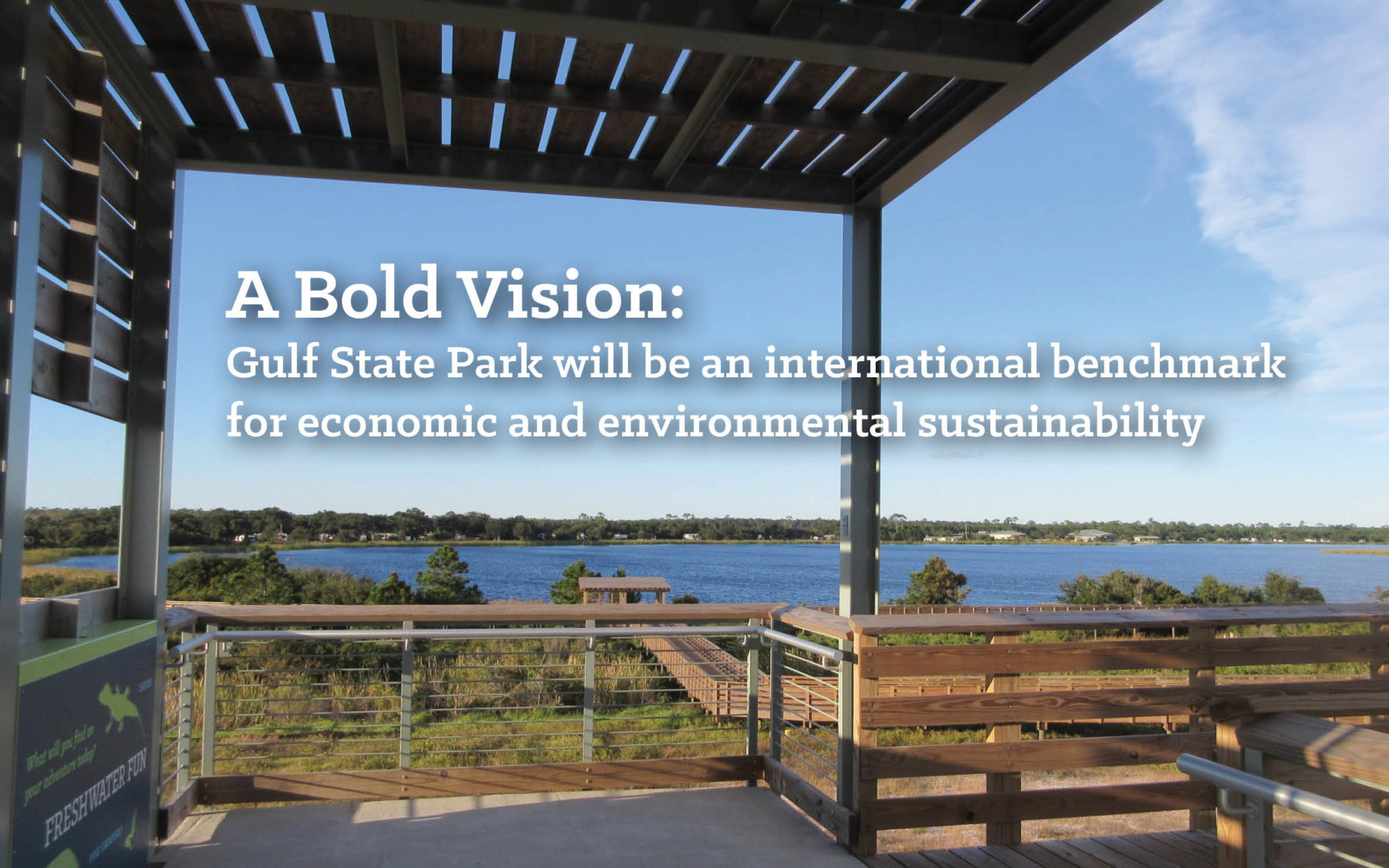
At 6,150 acres with seven different ecosystems, Gulf State Park is the largest protected open space on the Gulf of Mexico with such environmental diversity. A one-of-a-kind environmental resource, Gulf State Park and the local white-sand beaches are also a critical economic asset—the heart of the region’s tourism-fed economy.
I grew up in Birmingham, so contributing to this project as project manager for the master plan was particularly special to me. My family looks back fondly on visiting Gulf State Park while I was growing up, and I’m glad the master plan will lead to new memories for others. Seeing the master plan come to life over the past few years has been incredibly rewarding: 13 miles of new trails, new signage and wayfinding throughout the trail system, a new Learning Campus for K-12 students, 50 acres of dune restoration, an Interpretive Center, two pedestrian bridges over a state highway, and the Lodge and meeting space—in total more than $100M in capital improvements that will ensure the long-term environmental and economic health of the park.
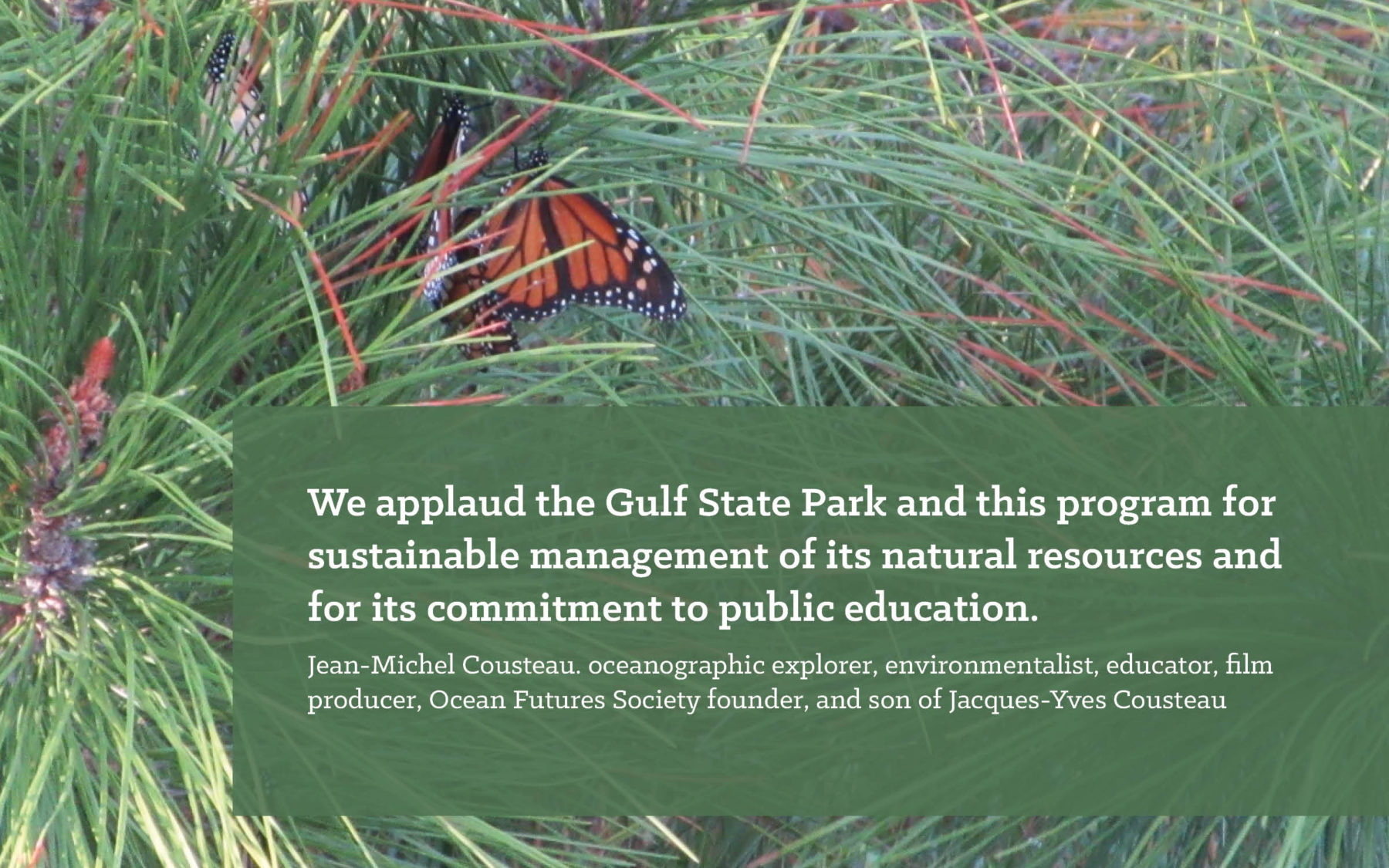
The Gulf State Park project is reshaping perceptions about Alabama. “Environmental leader” has not been a phrase many would use to describe Alabama. Now, it will. The recent park investments have positioned Alabama as a leader in the national environmental sustainability conversation. When the Interpretive Center opened in May, it became the first building to open in the southern U.S. on track for full certification under the Living Building Challenge (only 21 buildings across the globe currently meet this standard). Just up the beach, the Lodge is the first hospitality building in the world pursuing SITES Platinum certification. The Lodge and Interpretive Center are also the first commercial buildings in the world to receive designations as FORTIFIED structures, which measures a building’s ability to withstand hurricanes.
The park also purposely blends environmental sustainability with economic objectives—demonstrating an integrated model of resilience where environmental sustainability is also a path for economic success. The Lodge, with 350 guest rooms and 40,000 square feet of indoor and outdoor meeting space, will be an economic catalyst. Revenue from this facility will support the long-term economic health of park and provide additional financial support for the overall Alabama State Park system. The park enhancements, more broadly, are designed to put Gulf State Park on the map as a sustainable tourism destination, showing visitors why Alabama is nicknamed “Alabama the Beautiful.”
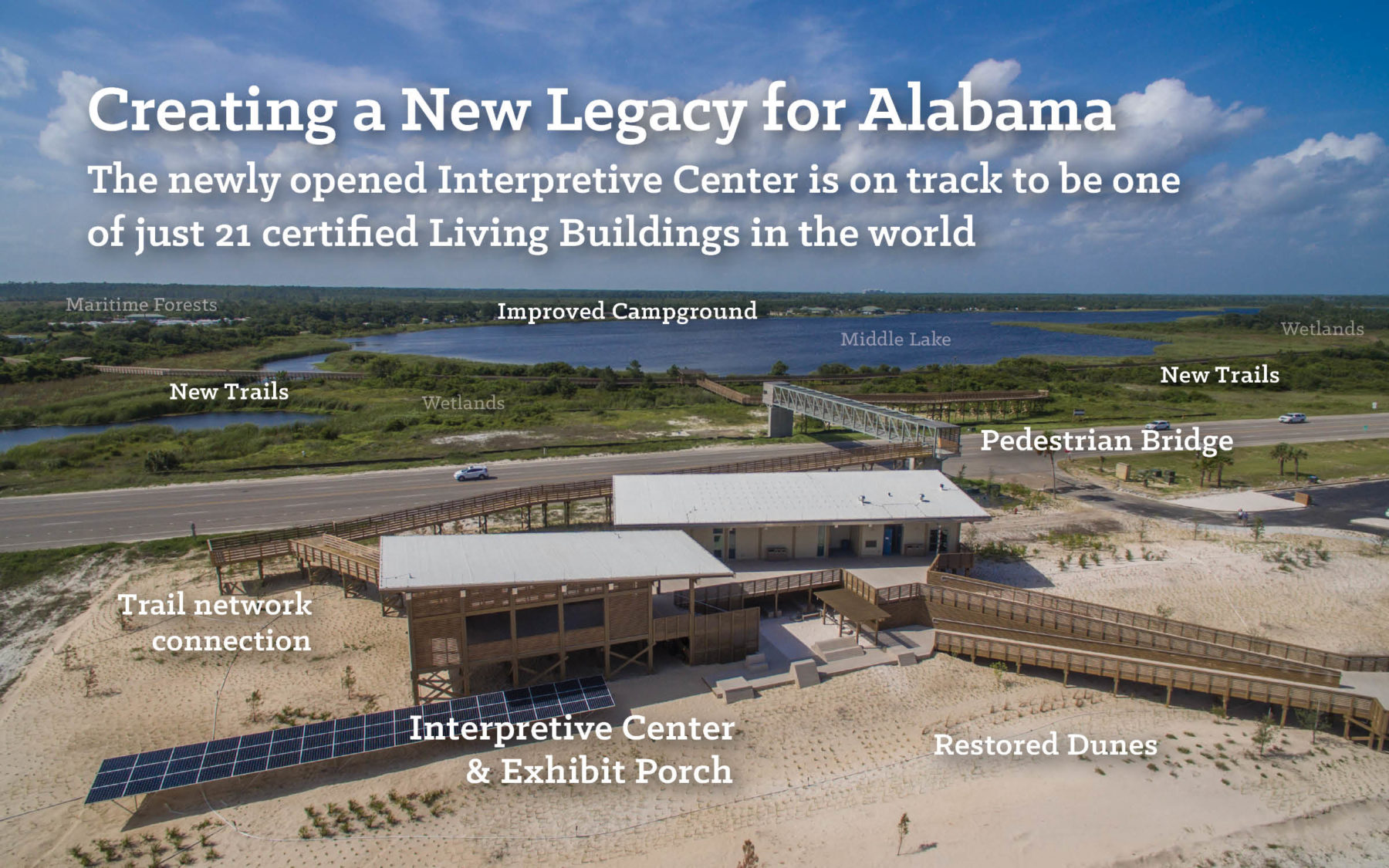
Aerial photo of Interpretive Center taken by the Lemoine Company
After the opening festivities, I was glad to have some quiet time to myself to explore the park. I headed out from the lodge on a run, up and over one of the new pedestrian bridges, and then out and across a new boardwalk bridge over the edge of Lake Shelby. Pausing at one of the new piers, I could see a bald eagle perched in the distance on one of the lake’s small islands.
As I toured the park, I passed many others who were also out enjoying the new trails. I shifted to the edge of the boardwalk to make room for a young family biking past. The parents and their son took up the rear carrying beach gear while their daughter raced ahead. On Gopher Tortoise Trail, a large group of adult cyclists road by, chatting with one another. Before, this spot was a park road commonly used as a cut-through by local cars. Now, it is closed to vehicles and has become a major connection for bicyclists and pedestrians.
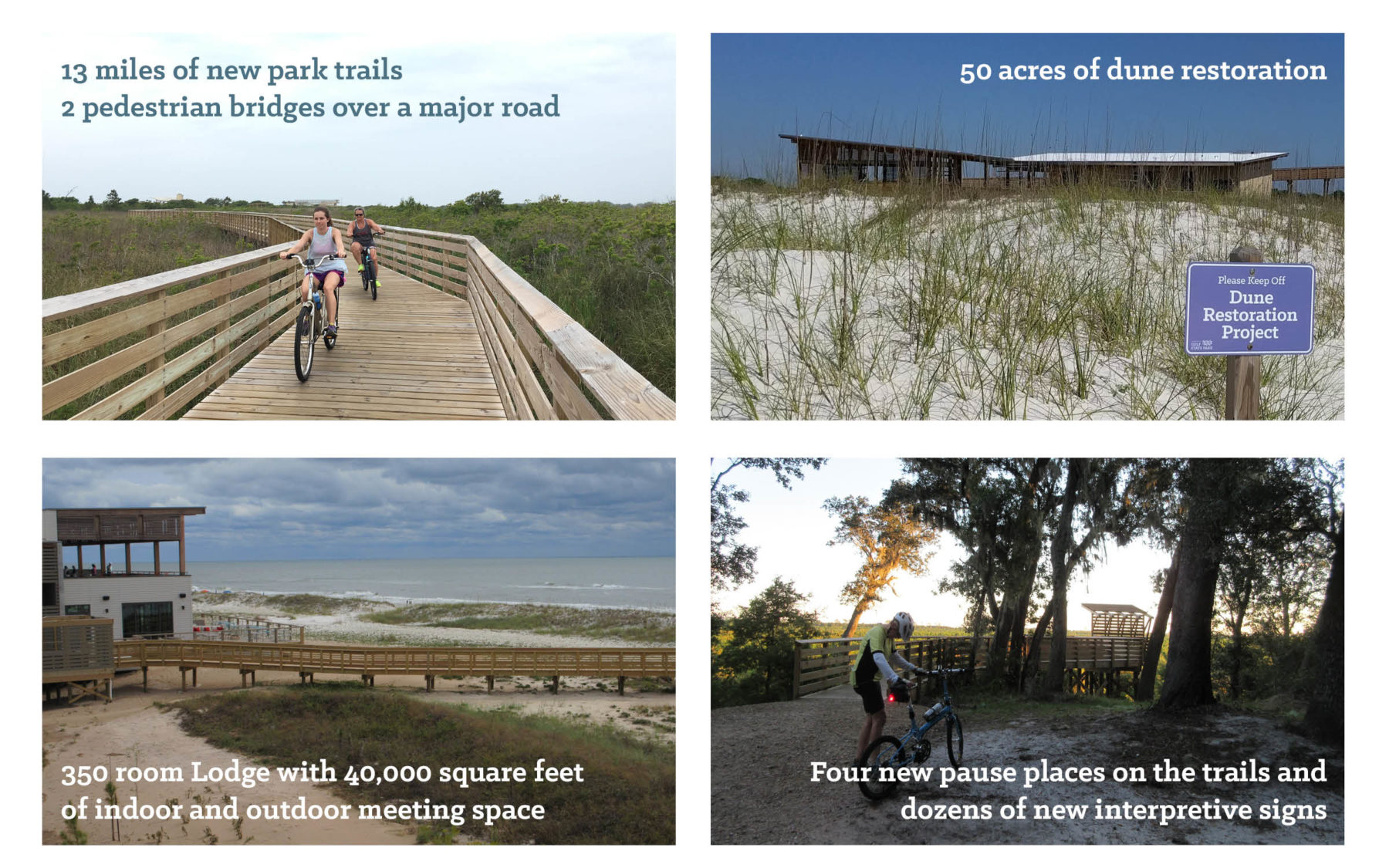
For urban planners, it’s not uncommon for master plans to take a decade, or more, to be significantly implemented. This project, in contrast, had raced from completed master plan to implementation in less than four years. I’m glad the improvements have come to life so quickly, bringing new memories to park visitors.
Better yet, this is just the beginning. The project’s sustainable design will continue to bring wonderful memories along with increased economic success and environmental health for years to come.
Thank you to the full master plan team (Watershed, Spackman Mossop & Michaels, Barry A Vittor & Associates, Biohabitats, and Inkhouse) and broader implementation team (including Architecture Works, Lake Flato, Rabun Rasche Rector & Reece, Volkert, and Hersick + Webster Creative Partners) who all contributed to designing and implementing these enhancements at Gulf State Park.
Economic resilience and ecological restoration fell hand-in-hand—the success of one goal relied on the success of the other at Gulf State Park
Despite being widely criticized for its environmental impacts, the trend of coastal land reclamation is still prevalent in many regions around the world, especially in developing countries